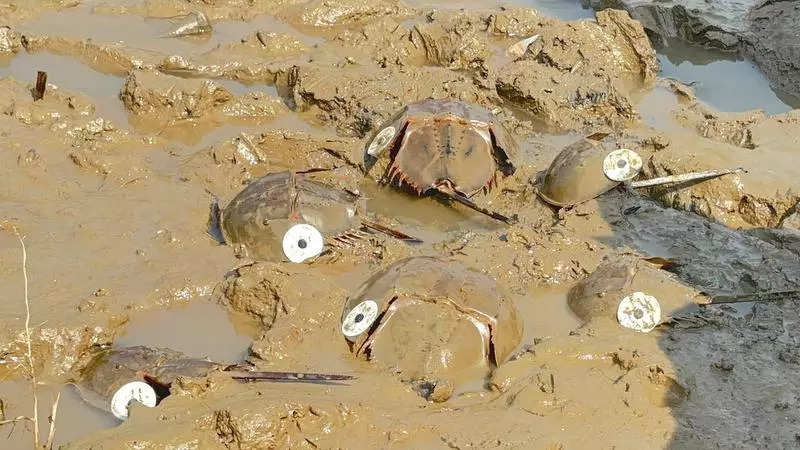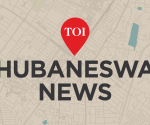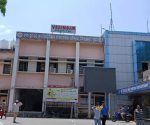ZSI, forest personnel tag 12 horseshoe crabs | Bhubaneswar News

Kendrapada: Zoological Survey of India (ZSI) and forest department personnel tagged 12 horseshoe crabs at Talachua fishing jetty within Bhitarkanika National Park in Kendrapada district on Tuesday.
“The scientists of ZSI fitted semi-metallic tags on the carapace of 12 horseshoe crabs at Talachua. All the tags were marked with a serial number, mobile number, and Zoological Survey of India. We released the 12 tagged horseshoe crabs near the sea at Talachua fishing jetty,” said divisional forest officer (DFO), Bhitarkanika National Park, Sudrashan Gopinath Yadav.
“Tagging is often conducted to obtain information on reproductive biology, movements, and growth rates. It will help us study the horseshoe’s migratory route and areas of foraging. Tagging data will also prove interconnections of horseshoe crab populations on the Odisha coast and help provide data on distribution, movement, longevity, and mortality of horseshoe crabs and will help track their management strategy,” he said.
On 18 Aug last year, the ZSI for the first time in India tagged 12 horseshoe crabs at Khandia Muhan estuary near Chandipur beach of Balasore district. In 2009, horseshoe crabs were enlisted as wild animals under Schedule IV of the Wildlife Protection Act, 1972, and in 2022, two species of horseshoe crabs were listed in Schedule II of the Act through an amendment, said Hemant Rout, an environmentalist and secretary, Gahirmatha Marine Turtles and Mangrove Conservation Society.
Odisha is the main home of horseshoe crabs in the country. The highest density of horseshoe crabs has been recorded in Balaramgadi and Chandipur beaches of Balasore district and Hukitola, Ekakula, Talachua, Satabhaya, and Madali beaches of Kendrapara district, added Rout.
“The scientists of ZSI fitted semi-metallic tags on the carapace of 12 horseshoe crabs at Talachua. All the tags were marked with a serial number, mobile number, and Zoological Survey of India. We released the 12 tagged horseshoe crabs near the sea at Talachua fishing jetty,” said divisional forest officer (DFO), Bhitarkanika National Park, Sudrashan Gopinath Yadav.
“Tagging is often conducted to obtain information on reproductive biology, movements, and growth rates. It will help us study the horseshoe’s migratory route and areas of foraging. Tagging data will also prove interconnections of horseshoe crab populations on the Odisha coast and help provide data on distribution, movement, longevity, and mortality of horseshoe crabs and will help track their management strategy,” he said.
On 18 Aug last year, the ZSI for the first time in India tagged 12 horseshoe crabs at Khandia Muhan estuary near Chandipur beach of Balasore district. In 2009, horseshoe crabs were enlisted as wild animals under Schedule IV of the Wildlife Protection Act, 1972, and in 2022, two species of horseshoe crabs were listed in Schedule II of the Act through an amendment, said Hemant Rout, an environmentalist and secretary, Gahirmatha Marine Turtles and Mangrove Conservation Society.
Odisha is the main home of horseshoe crabs in the country. The highest density of horseshoe crabs has been recorded in Balaramgadi and Chandipur beaches of Balasore district and Hukitola, Ekakula, Talachua, Satabhaya, and Madali beaches of Kendrapara district, added Rout.
















